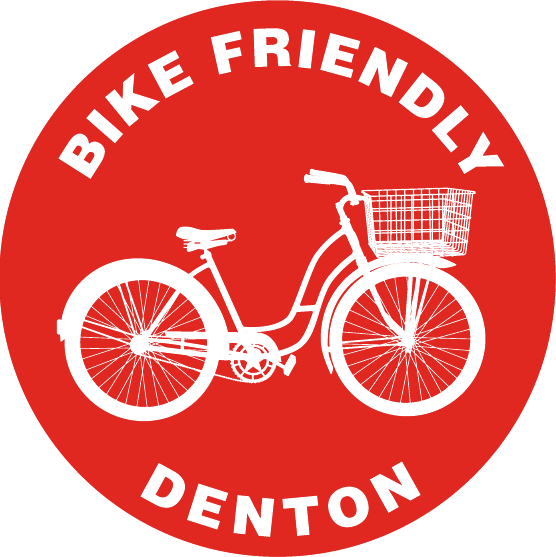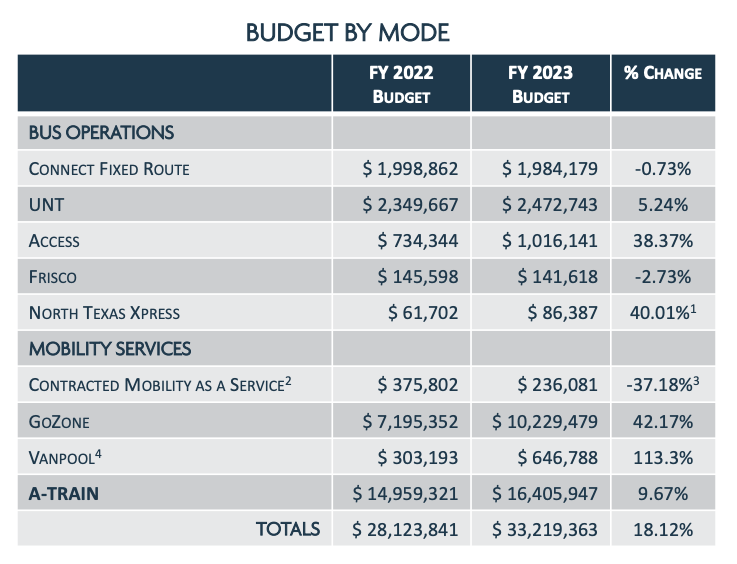GoZone Hits Record Highs for Turn-Aways, Wait Times and Ridership in September
October 14, 2022
GoZone riders experienced record-high turn-away rates and wait times in September, according to new data in DCTA’s GoZone Performance Dashboard. GoZone also set a new ridership record.
A record 21 percent of all ride requests–about 21,000 attempts–were turned away due to lack of available seats. The previous high was 17 percent in March, 2022.
Estimated wait times hit a new high of 25 minutes on average, slightly higher than the average 24.5 minute wait times in March.
GoZone’s ridership increased by nearly 1,000 since August, marking a new high of 69,037 GoZone trips in September. Ridership growth on GoZone has stayed relatively flat since June. This suggests that GoZone is currently operating at capacity, according to a ridership report from the August DCTA Board meeting.
Ridership report from Page 127 of DCTA Board meeting packet for September 22, 2022.
The DCTA Board faces the same conundrum as it did in March when turn-away rates and wait times spiked:
Increase the budget in order to create more capacity.
Suppress ridership by allowing wait times and turn-away rates to worsen to the point that only the most desperate people will use the service.
Suppress ridership by increasing fares or limiting where the service operates.
The Board responded in April by increasing the GoZone budget by $1.5 million to add more capacity to accommodate more riders. Presentations estimated the additional funding would bring wait times down to 15 minutes and seat unavailability down to 5%.
Presentation slide from the DCTA Board meeting on April 28, 2022.
The infusion of additional funding lowered estimated wait times to 17.8 minutes and seat unavailability to 5 percent in June. However, the new capacity was consumed in June, and wait times and seat unavailability began climbing again in July and have trended upward each month since.
In January, GoZone fares will increase from the $0.75 promotional fare to $1.50 plus $0.50 for every additional mile after four miles in Denton. The $0.75 promotional GoZone fare was intended to last only six months but has been in place for more than a year while bus fares have remained full price at $1.50.
At the same time that GoZone fares double in January, DCTA will cut three more Denton bus routes: Route 2, Route 4 and Route 5. Prior to the pandemic, these three routes combined carried roughly 11,800 monthly trips. Since the pandemic began, combined ridership on these routes is about 1,800 per month.
Between March 2020 and today, the DCTA Board cut service hours on these routes from roughly 350 hours per month each to around 260 hours per month currently.
All three routes are currently not usable by most people with a full-time job because they start too late for someone who works 8 AM - 5 PM or end too soon for someone who works 9 AM - 6 PM. Most full-time employees would show up to work late or not be able to catch a bus back home.
September Bus Ridership
The remaining Denton Connect buses carried approximately 12,600 passengers in September. UNT bus routes carried roughly 192,000 passengers, almost three times more than GoZone during the same period.
DCTA’s finalized FY 2023 budget is not yet posted on the DCTA website, but proposed FY 2023 funding was $2 million for Denton Connect fixed route buses, $2.5 million for UNT fixed route buses and $10.2 million for GoZone.
Proposed FY 2023 budget from Page 16 of the DCTA Board meeting packet for June 16, 2022.
UNT’s fixed routes buses carried nearly three times more passengers than GoZone at a fraction of the cost in September. UNT’s fixed route buses also turned away fewer riders due to lack of available seats and featured more predictable wait times than GoZone, which may arrive anywhere from five minutes to more than an hour after requesting a ride.
According to previous presentations to the DCTA Board, about 54 percent of GoZone rides start or end within a half mile of the UNT main campus. Thus, potentially half or more of GoZone’s 69,000 passenger trips in September were UNT students, faculty or staff who DCTA could move more efficiently with high-frequency fixed route buses.
DCTA sent emails and push notifications to GoZone users in the UNT area in an attempt to encourage them back onto fixed route buses.
GoZone service is likely to remain difficult and unreliable until the DCTA Board either funds additional capacity or finds ways to discourage use of GoZone through higher fares, restricted service areas, poor service quality or high-quality fixed route bus service that takes people where they need to go.
The next DCTA Board meeting is scheduled for October 27th. The meeting agenda is not yet posted on the Board Information page of the DCTA website.




